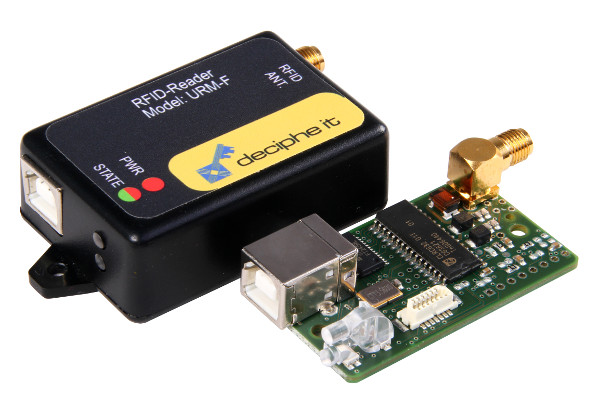RFID Readers Lend Sophistication To Help Earlier Methods Of Identification And Coding
RFID refers to the universal term radio-frequency identification which describes a program that transmits an unique serial number that is certainly identified with an item or person. This really is done wirelessly with the utilization of radio waves, which technology doesn't need line of vision or contact to get the essential information.
The Components of an RFID System
A RFID reader sends a sign to some tag and reads its answer. This USB Digital Output Module has an integral circuit where the desirable information is saved. The label even offers an antenna that can get electromagnetic power which it receives from the antenna of an RFID reader. Some tags have their own power source and will always send out signals that can be picked up by readers.
 These tags, passive or energetic, are attached to the item that wants tracking, and labels will be detected by the antenna of the RFID reader when they come in range. The tag is authenticated by the reader and has software that passes on the information to other apparatus.
These tags, passive or energetic, are attached to the item that wants tracking, and labels will be detected by the antenna of the RFID reader when they come in range. The tag is authenticated by the reader and has software that passes on the information to other apparatus.
RFID methods perform in precisely the same manner as bar codes, except that they do not require to contact the thing that is tagged. The ability of RFID readers to monitor things maybe not in their line of vision permits them to be utilized even to monitor cars, live stock and items constantly going in assembly lines.
RFID Readers
RFID methods can be of three varieties. A passive reader energetic tag or PRAT system has a reader that receives signals from labels that transmit radiofrequency and have batteries. The reader can be fixed to accept signals from distances up to 2000 feet and helps considerably in protection and supervision of assets.
A USB Digital Input Module or busy reader inactive tag has a reader which receives responses from passive labels, which are activated by these signals and sends out signs.
An active reader active tag or ARAT method has viewers that activate tags by delivering them a signal. Readers used included in RFID methods can be at fixed places or can be mobile and hand held apparatus. These devices are sometimes mounted on automobiles to enable the readers to function over greater areas.
The Function of an RFID Reader
The main function of an RFID Reader is really to interrogate RFID labels which come within its range. This interrogation can be done wirelessly mainly because short distances are included, without it being necessary to be in the line of vision of the tagged item.
RF modules that act to equally receive and transmit signs which have to be in the radio frequency are contained by these readers. This transmission is carried out by oscillators that creates the wanted frequency. While an amplifier increases the signs so that they are read by passive labels, a modulator functions to impinge information commands on this particular sign which is carrying the frequency.
The info which is returned from the tag is acquired by a demodulator that extracts the info, while the signs are strengthened by an amplifier so that they'll be more readily processed. Readers comprise micro chips that act as control units and have an OS and memory that enables it to be stowed and filters the information. The stored data is subsequently sent to the community which performs the mandatory functions of protection, logistics, identification or any other use which is demanded from the information.
RFID readers are quickly becoming the preferred way of ensuring security, maintaining updated tips and additional linked with other software which allows organizations to simply take the required action.